In an acupuncture treatment I will use additional tools along with my traditional acupuncture needles, incorporating Acupressure, Cupping or Gua sha into an acupuncture treatment when necessary. If Gua Sha has been helpful to a patient’s condition, I will often recommend for them to do this treatment at home, individually or with a partner. Providing my patients with education and resources for at home therapy and offering guidance for proper procedure will produce optimal results with little to no adverse effects. Gua Sha therapy can be performed at home with little training, yet one should educate themselves on the benefits, the conditions that can be treated, the contraindications to treatment & the procedure itself.
Gua Sha
Gua Sha (pronunced Gwah Shaw or Gwah Saw) , is an ancient manual medical technique that uses a tool to scrape the skin, muscle & fascia for the purpose of loosening adhesions or stagnation, relieving muscle tension & promoting normal circulation to these tissues. This creates an expansion of the tissues-increasing blood flow, promoting better functioning of sweat and sebaceous glands, flushing capillary beds, draining stagnant blood, toxins and lymph, restoring normal metabolic processes and re-supplying vital nutrients to the surrounding tissues. The word Gua translates to Scraping & the word Sha to the Markings that appear.
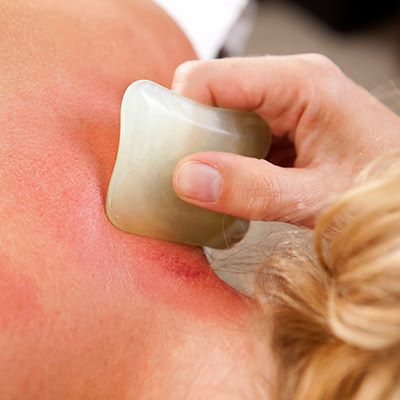
Benefits of Gua Sha
Gua Sha is an effective method to detoxify the body, stimulate the lymphatic and nervous systems, and promote healing of tissues, organs & structures. The repeated even strokes pull stagnant fluids to the surface, removes toxic pathogens and promotes the flow of fresh oxygenated, nutrient rich blood & lymph. Expected results are immediate relief from pain/discomfort, increase in mobility, enhanced immunity & a reduction of inflammation in the tissues/structures. Gua Sha has become popular in the cosmetic/beauty arena in the last few years and can be used on the face, neck and chest to increase lymphatic drainage, reduce inflammation and acne scarring, and decrease fine lines & wrinkles.
- Reduce Pain & Inflammation
- Increase blood flow to muscles, tissues and joints
- Release muscle tension, stiffness, cramps/spasms
- Breaks up stagnation & loosens adhesions
- Detoxify the body, Reduce a fever
- Decrease physical and mental fatigue
- Heighten mood and sense of well-being
- Decrease anxiety and regulate the stress response
- Improve general relaxation and sleep
- Stimulate the immune system
- Improve circulation to the face
Common conditions treated with GuaSha
- Muscle tension/pain/cramps/spasms
- Tingling/numbness
- Adhesions/scar tissue
- Post injury trauma
- Joint stiffness & pain
- ROM limitations
- Sleep issues, insomnia
- Lifts & firms the facial tissues
- Fever, Cold & Flu symptoms
- Sinus congestion, allergy symptoms
- Lung/respiratory conditions, asthma
- Headaches & jaw pain
- Emotional imbalance such as anxiety/depression
- Gynecological disorders
- Digestive disorders, stomach pain
Contraindications for Gua Sha
Gua Sha is contraindicated in cases of severe diseases, bleeding disorders or persons taking blood thinners, serious communicable diseases, frail elderly persons, or chronic cortisone users.
Do not apply Gua Sha over broken bones, dislocations, hernias, slipped discs, recent surgical incisions, varicose veins, or open wounds or scratches.
Avoid scraping over moles, pimples or skin irregularities
Gua Sha should not be performed on affected areas during the acute stages of Psoriasis, Eczema or Rosacea, or on areas during outbreaks of Uticaria (Hives), Herpes or Shingles.
Gua Sha is contraindicated during pregnancy on the low back and abdominal areas.
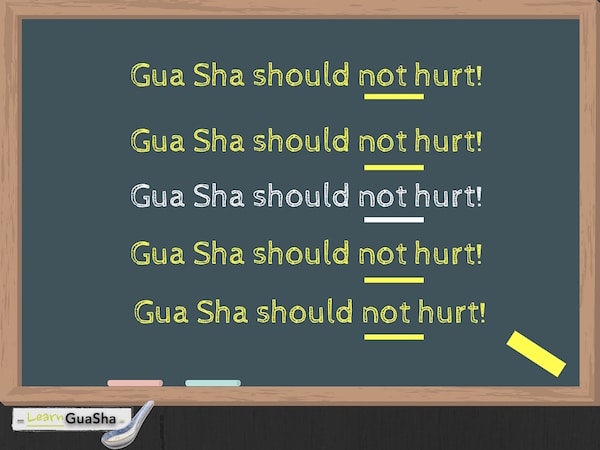
Gua Sha Application & Procedure
1) Choose an area of tension, pain, stiffness, soreness, inflammation or discomfort. Gua Sha can be applied to almost any part of the body, using caution on areas of softer skin- inside of arms/legs or belly.
2) Apply a small amount of lubricating salve or oil to the skin to avoid discomfort & improve glide. Medicated oils or salves can also help open up the tissues and move the stagnant blood/fluids.
3) With the tool in one hand use other hand to anchor the skin/tissue as you scrape away from or toward the anchored skin.
4) Use the tool to scrape the tissue in even, short or long strokes, going with the grain, against the grain or across the grain of the muscle fibers. Practice with the length of the stroke and the amount of pressure you are applying while scraping- light to deep.
5) If you are performing on a partner make sure to check in with them as to their comfort level with the amount of pressure and location of the application.
6) Scrape an area for a few minutes before moving on, alternating between light & deeper pressure. If you are getting some “Sha” continue for a while longer to resolve the blood stagnation in that area.
7) Gua Sha can be applied over bony structures with more caution and less pressure than the fleshier areas of larger muscles.
8) Apply Gua Sha for 5 to 15 minutes, making sure not to “overdo” it on any particular area.
9) Keep the marks covered, warm and avoid exposing them to sun, wind or cold.
10) Either throw away your Gua Sha tool or clean it with soap & warm water, then disinfect with 10% bleach solution.
Perform another treatment 1 to 2 times a week, and ONLY after the Sha marks have faded.
The Gua Sha Marks
The most common misunderstanding regarding one of the most powerful and beneficial after effects of Gua Sha, is the marks that result. The scraping technique draws up the old stagnant blood and sticky fluids, bringing them up to the surface allowing healthy circulation to be restored to the affected area, thus creating space for oxygen, living cells and nutrients for faster recovery.
Gua Sha can leave marks (Sha) which indicate that stagnation has been moved from the deeper tissue layers to the surface where it can be eliminated through the skin, circulatory & lymphatic systems. The color and pattern of the marks depend on the level of stagnation in the area. The raised skin, bumps & markings are called petechiae and will fade into what is called ecchymotic patches (blended redness) and can range from a bright pink to deep red & dark purple, usually lasting 3 days to a week. If there is no stagnation present, there will be only a pink marking which disappears in a few minutes to a couple of hours.
The Sha marks will lessen in intensity as the deeper issues are resolved and the stagnation and toxins have been dredged up and flushed out of the body through the circulatory system and expulsion from the pores and sweat. Usually several Gua Sha applications are required to completely relieve pain and tension.
Although the marks look painful, they are not. Receivers usually feel an immediate sense of relief that can last for weeks.
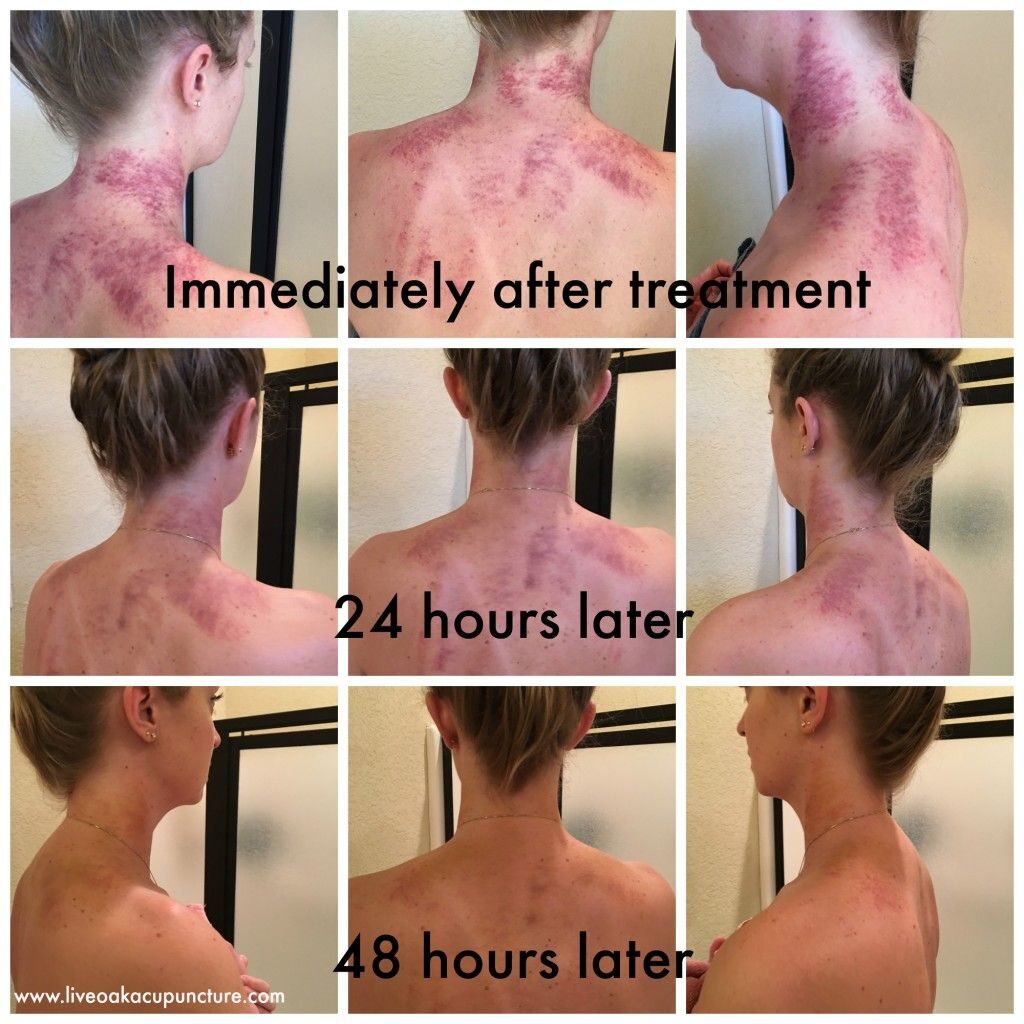
Self-Care After a GuaSha Treatment
After a Gua Sha treatment the patient is advised to keep the area protected from wind, cold and direct sun until the sha fades. They are also encouraged to drink plenty of water and eat moderately. It is recommended to relax after a treatment and not to engage in excessive physical activity.
Frequency of Treatments
It is advisable to wait until the marks from the previous treatment have faded before performing another treatment. This can be several days to a week. The recommended frequency & quantity of treatments is 1 to 2 times a week for 2 to 4 weeks. The effects of Gua Sha are cumulative and the treatment should be repeated until the condition or ailment is resolved. After several applications the severity of the marks will usually diminish with each follow up treatment, indicating that the stagnation in the tissues has decreased.
Tools
There are a variety of tools you can use to perform Gua Sha. The most important feature of the tool is that is should be blunt, yet smooth. A jar lid with rounded edges or Chinese soup spoon work well. You can also purchase Gua Sha tools on Amazon.com.
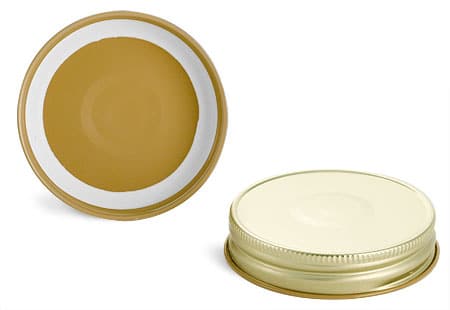

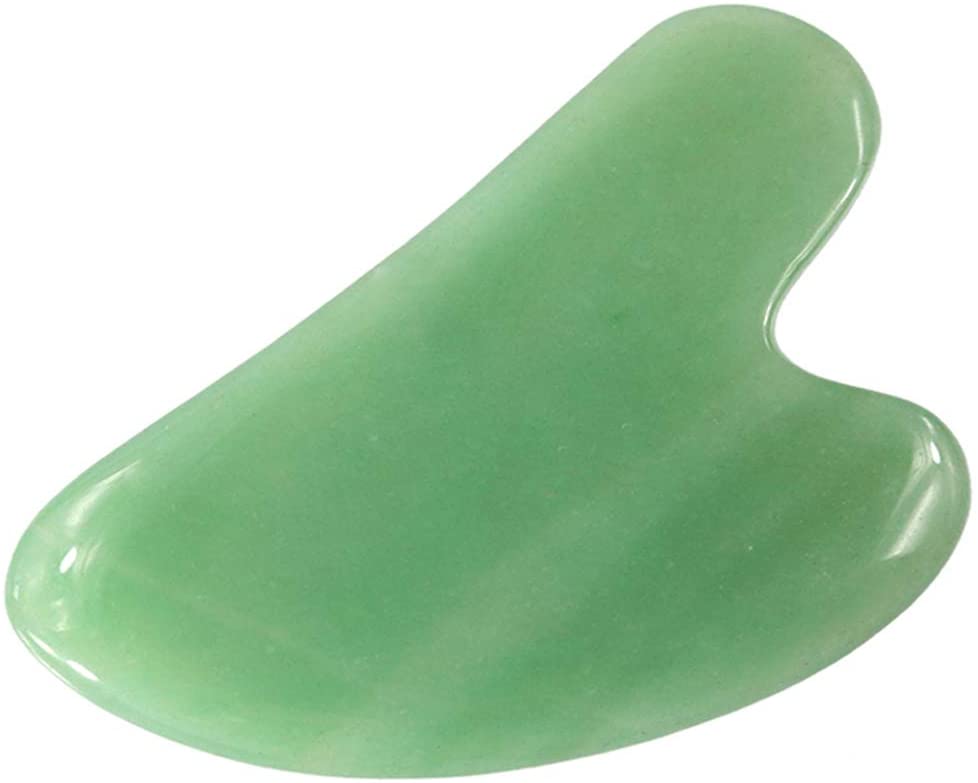
There are many different oils or salves you could use to lubricate the skin. It is recommended to use an organic, non-petroleum product. You can use coconut, olive or sesame oil, although I prefer one that includes medicinal herbs for opening the tissues for pain relief such as Burt’s Bees Badger Balm.
Clean up
Always wash your tools with warm soapy water, then soak them in a 10% bleach solution or use medical grade disinfectant wipes to assure cleanliness.
Please contact me with any questions you have about Gua Sha, Acupuncture or Asian Bodywork Therapy.
Jessica Faulkner, L.Ac.
410-562-2051
jess@jessfaulkner.com

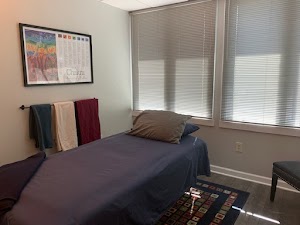


 My path to oriental medicine came through my experience with massage & bodywork. For over 20 years I have been studying and practicing massage therapy, but it was when I discovered Shiatsu (acupressure), that I realized there was something very powerful about Chinese Medicine…
My path to oriental medicine came through my experience with massage & bodywork. For over 20 years I have been studying and practicing massage therapy, but it was when I discovered Shiatsu (acupressure), that I realized there was something very powerful about Chinese Medicine…